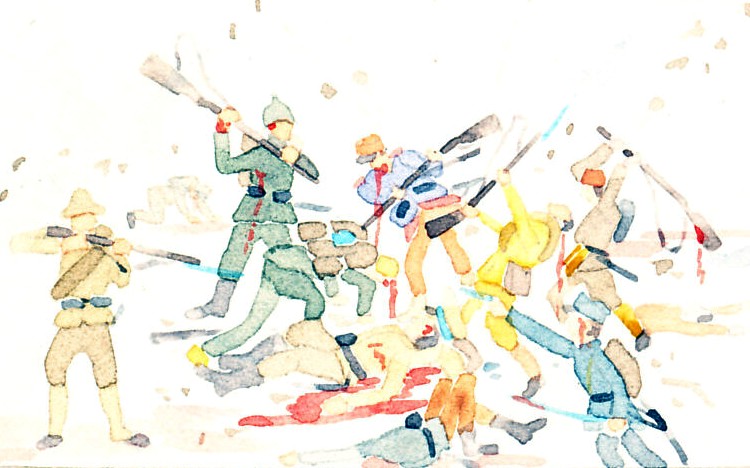Switzerland personified bears the symbol of the International Red Cross, headquartered in Geneva, Switzerland, and the inverse of the Swiss flag, a white cross on a field of red. In the foreground a train bearing the French tri-color and labeled "grands blessés" — the severely wounded — comes towards France, and a train goes in the opposite direction, to Germany. A bouquet in the French colors lies at the feet of the cross bearer who carries files about and correspondence for prisoners, spilling them along the way. Switzerland borders the combatants France, Germany, Austria-Hungary, and Italy.
One of a 1916 series of 1916 postcards on neutral nations by Em. Dupuis.

